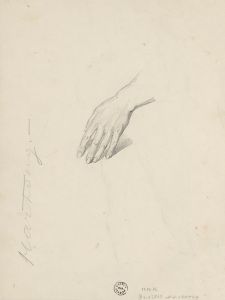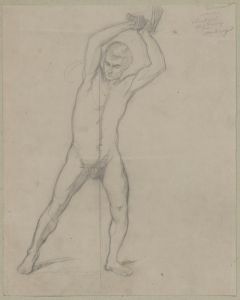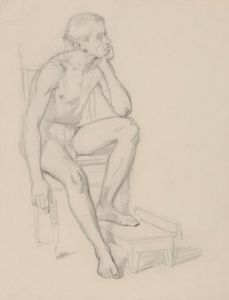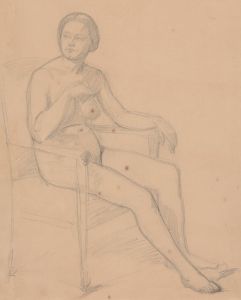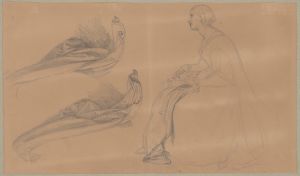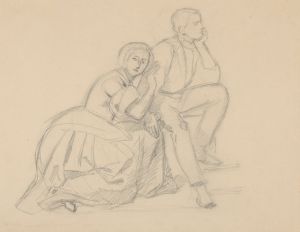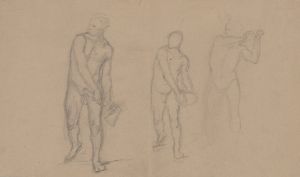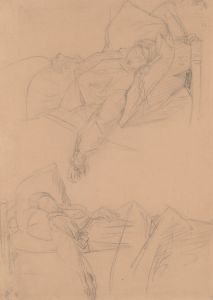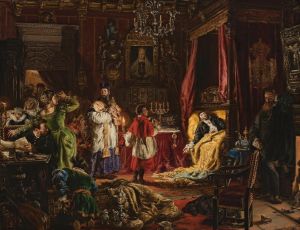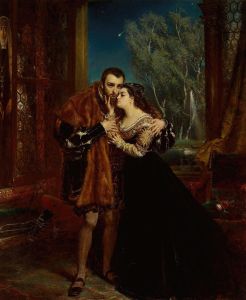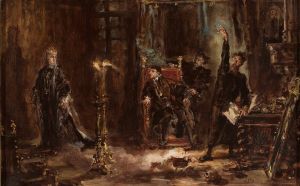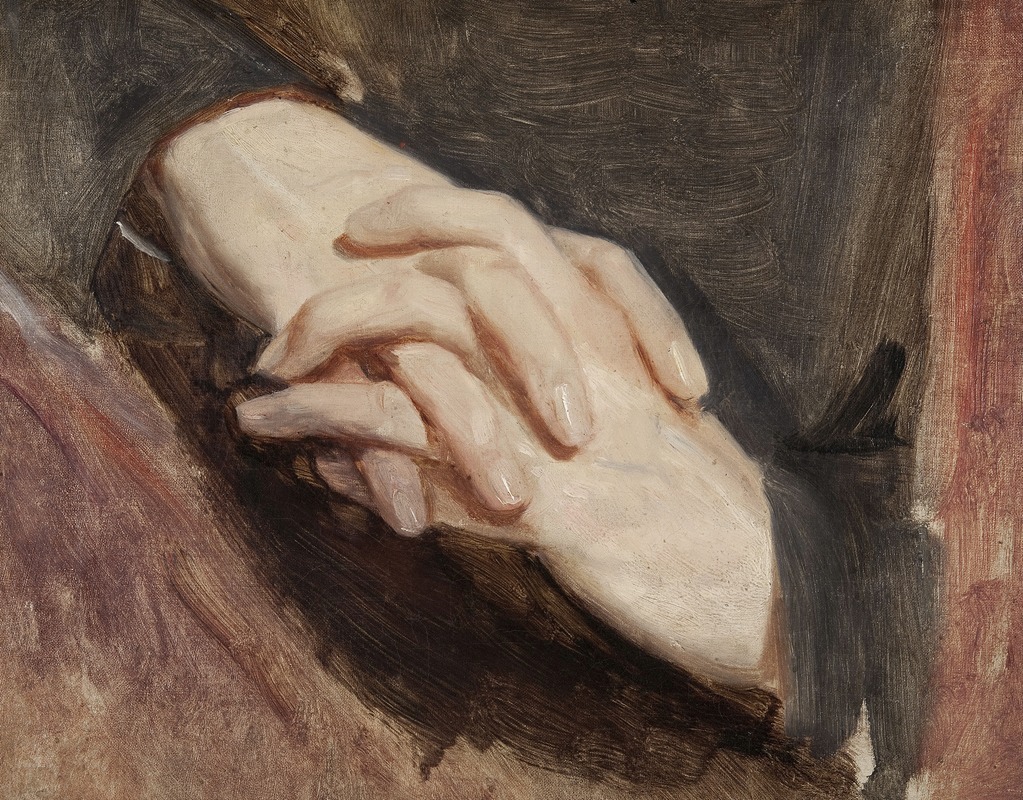
Study of the hands of Sigismund Augustus for the painting “Death of Barbara Radziwiłł”
A hand-painted replica of Józef Simmler’s masterpiece Study of the hands of Sigismund Augustus for the painting “Death of Barbara Radziwiłł”, meticulously crafted by professional artists to capture the true essence of the original. Each piece is created with museum-quality canvas and rare mineral pigments, carefully painted by experienced artists with delicate brushstrokes and rich, layered colors to perfectly recreate the texture of the original artwork. Unlike machine-printed reproductions, this hand-painted version brings the painting to life, infused with the artist’s emotions and skill in every stroke. Whether for personal collection or home decoration, it instantly elevates the artistic atmosphere of any space.
Józef Simmler, a prominent Polish painter of the 19th century, is known for his historical and genre paintings. One of his notable works is the painting "Death of Barbara Radziwiłł," which captures a poignant moment in Polish history. The painting depicts the deathbed scene of Barbara Radziwiłł, the second wife of Sigismund II Augustus, the last Jagiellonian king of Poland. This artwork is celebrated for its emotional depth and historical significance, reflecting the personal and political turmoil of the time.
The "Study of the Hands of Sigismund Augustus" is a preparatory work by Simmler for the larger painting "Death of Barbara Radziwiłł." This study focuses specifically on the hands of King Sigismund II Augustus, capturing the intricate details and emotional expression conveyed through his gestures. The hands are a crucial element in the final composition, as they symbolize the king's grief and helplessness in the face of his wife's impending death.
Simmler was meticulous in his approach to historical accuracy and emotional expression. His studies, such as this one, were essential in developing the final composition of his paintings. By concentrating on the hands, Simmler was able to convey a deep sense of sorrow and resignation, which is central to the narrative of the painting. The hands of Sigismund Augustus, as depicted in the study, are likely to be expressive, showing a mix of tenderness and despair, which adds to the overall emotional impact of the final work.
The historical context of the painting is significant. Barbara Radziwiłł was a member of the powerful Radziwiłł family and became queen consort of Poland after her marriage to Sigismund II Augustus. Their union was controversial due to political tensions and opposition from the Polish nobility, as well as Sigismund's mother, Bona Sforza. Despite the challenges, Sigismund's love for Barbara was profound, and her untimely death in 1551 deeply affected him. This personal tragedy is captured in Simmler's painting, making it not only a work of art but also a reflection of a historical event that had lasting implications for the Polish monarchy.
Simmler's ability to convey emotion through detailed studies such as the "Study of the Hands of Sigismund Augustus" demonstrates his skill as an artist and his dedication to portraying historical events with sensitivity and accuracy. The study itself, while a preparatory piece, holds artistic value as it reveals the process behind Simmler's creation of a larger narrative. Through such studies, Simmler was able to achieve a level of realism and emotional depth that characterizes his work and contributes to his reputation as a master of historical painting in Poland.
In summary, the "Study of the Hands of Sigismund Augustus" is an integral part of Józef Simmler's artistic process, providing insight into his method of capturing the emotional essence of historical figures. This study, along with the final painting, serves as a testament to Simmler's skill and his ability to intertwine art with history, creating works that resonate with viewers both emotionally and intellectually.







